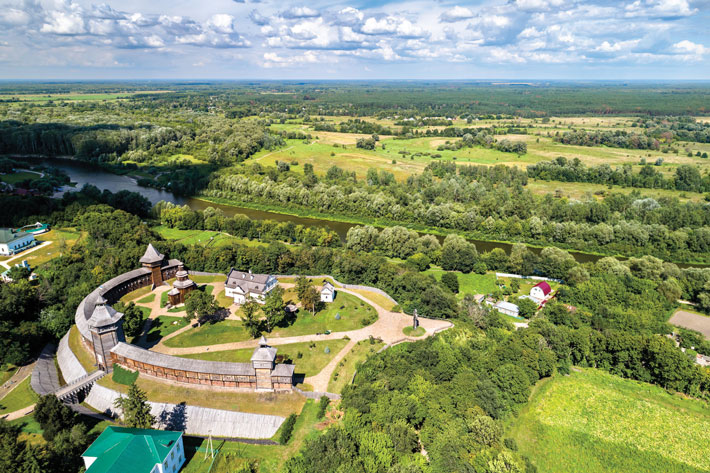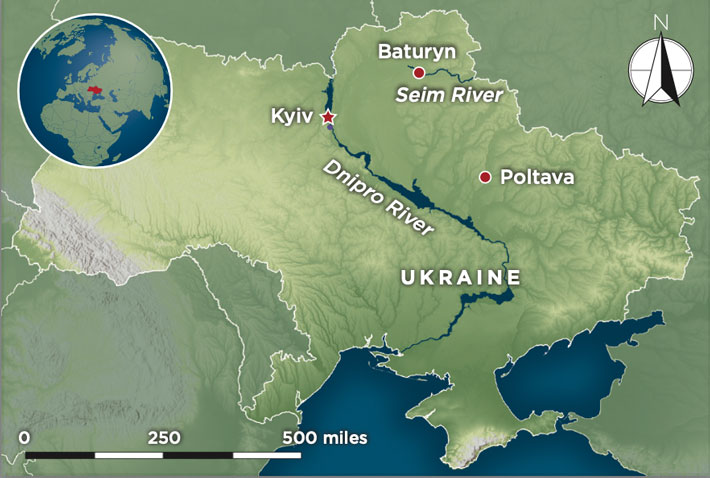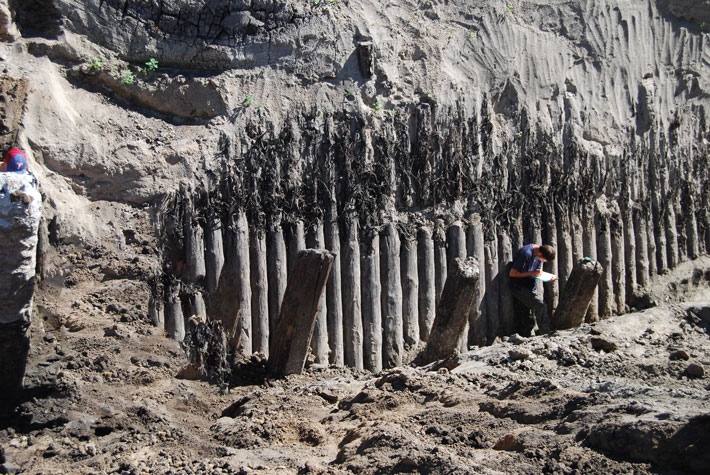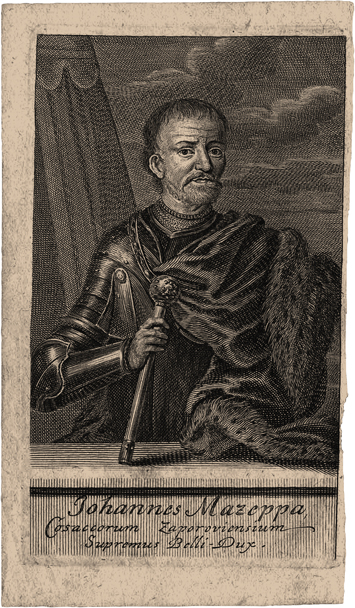On November 2, 1708, thousands of Russian troops acting on the orders of Czar Peter I, known as Peter the Great, stormed Baturyn, the Cossack capital in north-central Ukraine. The Cossack leader, or hetman, Ivan Mazepa—who had been a loyal vassal of the czar until not long before—had departed with much of his army several days earlier to join forces with the Swedish king Charles XII, Peter’s opponent in the Great Northern War (1700–1721). The fortified core of Baturyn consisted of a citadel on a high promontory overlooking the Seim River and a larger adjoining fortress densely packed with buildings, above which soared the brick Cathedral of the Holy Trinity. The citadel and fortress were each surrounded by defensive walls, earthen ramparts, and moats whose sides were lined with logs. Although they sustained heavy losses, the Russian forces managed to seize Baturyn, which proved to be a key victory.

Some 1,000 troops defending Baturyn scaled the fortification walls, crossed the moat, and stole away to rejoin Mazepa and the Swedes. The remaining 6,000 or so Cossacks and foreign mercenaries inside the fortress and citadel, along with a roughly equal number of civilians who had taken refuge there, were at the invaders’ mercy. Bent on punishing the populace for Mazepa’s betrayal, the attackers gave no quarter, slaughtering more than 11,000 in all, looting weapons, valuables, and provisions, and burning what remained. They also ventured just over a mile south to the suburb of Honcharivka, where Mazepa had built his private residence, a fortified villa featuring a three-story palace. They pillaged and torched this property as well. In a single day, the capital that Mazepa had spent two decades building into a cultural, artistic, and industrial center—and a symbol of Cossack independence—had been reduced to ash and ruin.

Starting in 2001, the Canada-Ukraine Archaeological Project, which includes members from the Canadian Institute of Ukrainian Studies (CIUS) at the University of Alberta and Chernihiv College National University, excavated at multiple sites in Baturyn and its suburbs in an attempt to learn what life was like in the Cossack capital and to understand what happened when it was destroyed in 1708. These excavations, which have been led since 2012 by Yurii Sytyi of Chernihiv College National University, have been on hold since 2022 due to Russia’s invasion of Ukraine. Based on some of the project’s early discoveries, in 2008 the Ukrainian government reconstructed the citadel and its fortifications. “In Ukraine, there’s not a single place that looks the way it did during the Cossacks’ time,” says Tatiana Tairova-Yakovleva, a historian of Ukraine and former director of the Center for Ukrainian Studies at St. Petersburg State University. “The archaeologists have done absolutely fascinating work. They were able to find the fortress and the residence of the hetman in Honcharivka, and this made the reconstruction possible. Now you can see how at least some of the buildings looked in Mazepa’s time. Now we can start to understand these people’s mentality and how they lived.”

In 1569, Poland and the Grand Duchy of Lithuania, which included Ukraine, united to form the Polish-Lithuanian Commonwealth. Chafing at this new entity’s efforts to control them, many Ukrainians took refuge on the frontiers to the south and east known as the Wild Fields. There, they were able to pursue a life of independence and adventure and came to be called Cossacks, derived from a Turkic term meaning “free men.” The Cossacks established successful farms, which they had to defend against persistent threats from the Ottoman Turks and their allies the Crimean Tatars to the south. Over time, the Cossacks became the political elite of Ukraine and, along with members of the Orthodox clergy, started to demand the right to rule themselves. After a series of failed uprisings, in 1648 the Cossacks achieved their goal. Led by their hetman, Bohdan Khmelnytsky, they threw off the yoke of Polish rule, attaining a measure of independence and establishing a state known as a hetmanate.
It didn’t last long. By 1654, the Cossacks were forced to become vassals of Muscovy, as Russia was then known, and their autonomy was significantly curtailed. Over the next few decades, they were alternately subjected to Russian and Polish domination, interspersed with outbreaks of bloody internecine strife. A series of hetmans were forced to make impossible compromises between their people’s desire for freedom and Polish and Russian rulers’ demands for control. In 1667, their more powerful neighbors split their territory in two: Right Bank Ukraine, to the west of the Dnipro River, would be ruled by the Poles, and Left Bank Ukraine, to the river’s east, would be ruled by Muscovy.

The Cossacks’ fortunes shifted with the rise of Mazepa to the position of hetman of Left Bank Ukraine in 1687 after his predecessor was exiled to Siberia, having been scapegoated for a failed military campaign against the Tatars. Mazepa ingratiated himself with Peter (reigned 1682–1725), supporting the 17-year-old czar in 1689 when he seized power from his older half-sister Sophia, who had been ruling as regent. The hetman was 50 years old at the time and shared his wide experience and education with the young czar. “He was like a father to Peter in a sense,” says Tairova-Yakovleva. Born into a noble Cossack family, Mazepa spent several years as a page in the court of the Polish king, attended university in Poland, Germany, France, and Italy, and studied artillery in Holland.
As hetman, he put his military training to good use, crafting a successful strategy in campaigns against the Tatars that led to peace with them and the Ottomans. This relieved both Ukraine and Muscovy of the strain of defending against incessant Tatar raids. As a reward for this accomplishment, Peter made Mazepa a knight of the Order of St. Andrew, Muscovy’s highest chivalric honor. Amid the burned remnants of the home of Pylyp Orlyk, Mazepa’s general secretary and chancellor, in a suburb to the north of the Baturyn fortress, archaeologists found fragments of a ceramic stove tile bearing the last known version of Mazepa’s coat of arms. Among its many features is the Order of St. Andrew, as well as a crown at the top identifying Mazepa as a prince of the Holy Roman Empire, an honor he was granted in September 1707 by the emperor Joseph I (reigned 1705–1711), also in recognition of his help in subduing the Ottomans and Tatars. “As Mazepa’s secretary, Orlyk probably knew right away when he was granted this status, and wanted to glorify him as a prince, so he commissioned this coat of arms with the princely crown on top,” says archaeologist Volodymyr Mezentsev of the Toronto office of CIUS, who is executive director of the Baturyn archaeological project and was coleader of the excavations from 2001 through 2013.





